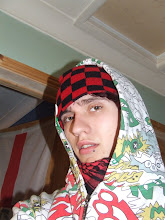This narrow definition of mise-en-scène is not shared by all critics. For some, it refers to all elements of visual style—that is, both elements on the set and aspects of the camera. For others, such as U.S. film critic Andrew Sarris, it takes on mystical meanings related to the emotional tone of a film.
Recently, the term has come to represent a style of conveying the information of a scene primarily through a single shot—often accompanied by camera movement. It is to be contrasted with montage-style filmmaking—multiple angles pieced together through editing. Overall, mise-en-scène is used when the director wishes to give an impression of the characters or situation without vocally articulating it through the framework of spoken dialogue, and typically does not represent a realistic setting. The common example is that of a cluttered, disorganized apartment being used to reflect the disorganization in a character's life in general, or a spartanly decorated apartment to convey a character with an "empty soul", in both cases specifically and intentionally ignoring any practicality in the setting.
In German filmmaking in the 1910s and 1920s one can observe tone, meaning, and narrative information conveyed through mise-en-scène. Perhaps the most famous example of this is The Cabinet of Dr. Caligari (1920) where a character's internal state of mind is represented through set design and blocking.
I got this information of the following link
http://en.wikipedia.org/wiki/Mise_en_sc%C3%A8ne


